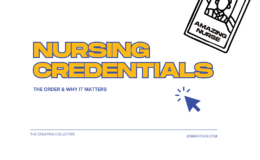The Article: Fenton, J. J., Jerant, A. F., Bertakis, K. D., Franks, P. (2012). The cost of satisfaction: A national study of patient satisfaction, health care utilization, expenditures, and mortality. Archives of Internal Medicine, published ahead of print at http://archinte.ama-assn.org/cgi/content/full/archinternmed.2011.1662.
Big Idea: Patient satisfaction is used to measure just about everything these days. We adamantly measure it, we report it to everyone, and we have initiatives specifically focused to improve it. Researchers studied 51,946 responses to the national Medical Expenditure Panel Survey from 2000 to 2007, following patients’ satisfaction scores (of physicians) as well as their subsequent emergency room visits, inpatient admissions, health care expenses, prescription drug expenses, and mortality rates.
Survey Says!: Study authors found that even after adjusting for sociodemographics and insurance status, patients with the highest satisfaction scores were less likely to make emergency room visits than their less satisfied counterparts, but they were more likely to have an inpatient admission, higher health care costs, greater prescription drug costs, and higher mortality rates.
Quotable: “In addition, patients often request discretionary services that are of little or no medical benefit, and physicians frequently accede to these requests, which is associated with higher patient satisfaction [references]. Physicians whose compensation is more strongly linked with patient satisfaction are more likely to deliver discretionary services, such as advanced imaging for acute low back pain [reference]” (p. E1).
“In combination with reduced emergency department use, increased inpatient care among the most satisfied patients raises the question of whether more-satisfied patients may be differentially hospitalized for elective or less urgent indications, because nonelective urgent hospital admissions often begin with emergency department visits. It is also possible that patients who are least satisfied with their physicians may be more likely to seek health care at emergency departments rather than at outpatient clinics” (p. E3).
“Advocates of patient experience metrics argue that systematic routine measurement of patient satisfaction is a powerful quality improvement tool for physicians and health plans [reference]. While we do not believe that patient satisfaction should be disregarded, our data suggest that we do not fully understand what drives patient satisfaction as now measured or how these factors affect health care use and outcomes. Therapeutic responsibilities often require physicians to address topics that may challenge or disturb patients, including substance abuse, psychiatric comorbidity, nonadherence, and the risks of requested but discretionary tests or treatments. Relaxing patient satisfaction incentives may encourage physicians to prioritize the benefits of truthful therapeutic discourse, despite the risks of dissatisfying some patients.” (p. E5).
So What?: This article is about as fresh as it can get; it was published online ahead of print on Monday, February 13th. This article turns patient satisfaction and health care utilization among the most satisfied patients on its head. It shines light on satisfaction scores strongly tied to physician compensation and how that may impact physicians’ ordering and prescription patters, leading to overtreatment and increased costs . Fascinating.





